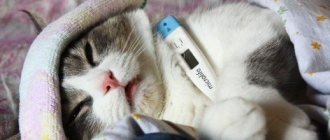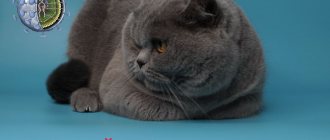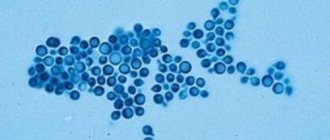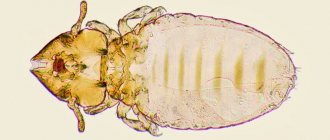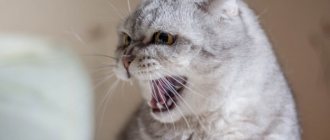What is distemper in cats
This is a highly contagious viral disease, which is also known as infectious parvovirus enteritis or panleukopenia. When infected, the number of all types of leukocytes in the bloodstream sharply decreases, the intestinal epithelium is affected, and a generalized infection affects the lymphatic system. Panleukopenia occurs more often in kittens - the still fragile body is more susceptible to the virus. The most dangerous time is spring and summer, when animals breed. Distemper in cats shows a high mortality rate, so it is important to start treatment in a timely manner - when the first signs appear.
Establishing diagnosis
Panleukopenia is a very dangerous disease, so the main thing to do when the first symptoms appear is to show the animal to a veterinarian. To make a diagnosis, attending physicians first examine and listen to four-legged patients, and then ask the owners about when the first symptoms of distemper appeared in cats.
After analyzing the data obtained, the animals are prescribed a set of studies.
Diagnostic methods
To understand whether a cat has the causative agent of panleukopenia in its body, blood and feces are taken from it for examination. To detect the virus, the following diagnostic methods are used:
- clinical blood test;
- examination of feces using the PCR method;
- blood chemistry;
- Ultrasound of the abdominal cavity;
- smear of discharge from the eye.
On a note. PCR testing may give a positive result in recently vaccinated animals. Therefore, be sure to check how long ago the cat was vaccinated.
Differential diagnoses
For effective treatment of distemper in cats, it is important to make a correct diagnosis. Since panleukopenia has symptoms characteristic of many diseases, the first step is to exclude:
- feline immunodeficiency virus;
- acute toxoplasmosis;
- intestinal perforation;
- pancreatitis;
- intoxication of the body;
- leukemia.
Panleukopenia virus in animals
Feline distemper occurs as a result of damage to the animal's body by parvovirus, the name of which in Latin is Virus panleukopenia feline (FPV). The virus retains its virulence in the external environment for up to one year, while it does not decompose when heated for an hour to 60°C, does not respond to changes in acidity ranging from pH 3.0 to 9.0, is not afraid of frost, and can withstand the effects of pepsin and trypsin , diethyl ether and chloroform - thanks to such amazing resistance, the pathogen can easily infect more and more victims.
How is it transmitted?
The sources of this deadly disease are sick cats and virus carriers. Parvovirus is shed in stool (feces, urine) or saliva. There are several ways of contracting panleukopenia:
- During oral contact. The virus can enter the oral cavity along with saliva. More often this happens when drinking water or eating food infected with viral particles from a virus carrier or a sick animal.
- By airborne droplets. A healthy individual becomes ill with panleukopenia while in close proximity to a patient.
- By contact method. Infection occurs through personal belongings, clothing or shoes of the owner of a furry animal who has been in contact with a virus-carrying cat. In addition, parvovirus survives on litter trays, harnesses, bowls and toys for up to a year.
- In utero. The virus easily passes through the placental barrier and penetrates the fetus. Kittens infected at an early stage of pregnancy die (decompose inside, mummify) before birth or die 1-2 days after birth. Babies infected at a late stage often have congenital underdevelopment of the cerebellum.
- Transmissible method - when the causative agent of panleukopenia is carried by blood-sucking parasites - ticks, fleas, bedbugs.
Almost all representatives of the cat family can become infected with parvovirus: tigers, leopards, cheetahs. Among domestic animals, distemper is a widespread disease, to which unvaccinated kittens under one year of age and cats older than 6-8 years are more susceptible: young animals are predisposed to the disease due to undeveloped immunity, and older pets with age lose the ability to resist various viruses, because the immune properties of the body become weaker.
Pregnant cats and small kittens are also at risk of contracting panleukopenia. The chances of contracting plague increase in babies over two weeks of age. This is explained by the fact that the mother’s immunity weakens, and the baby’s own immune system is not enough to resist such a dangerous virus. If we consider breed predisposition, parvovirus is most dangerous for British representatives, Maine Coons, Siamese and Persian cats.
Is it dangerous for humans?
Panleukopenia is not dangerous to humans. They can only act as carriers of parvovirus on their outerwear, shoes and other things. Owners of several pets should be careful: if one cat has become infected with infectious enteritis, it must be isolated from a healthy cat and strictly quarantined. It is noteworthy that dogs are not afraid of the virus. Although they can get distemper, it can be caused by a completely different type of parvovirus.
Why do cats get distemper?
The methods of infection are varied, because due to its high survival rate and resistance to exposure, the virus is very widespread. In addition to frost and heat, it can withstand treatment with disinfectants such as chloroform, ether, pepsin and trypsin.
Routes and methods of infection
The virus is shed from a sick animal in its feces and saliva. It can be transmitted to a healthy cat in different ways.
:
- Oral route
infection is possible when the virus is transmitted through particles of saliva of an infected individual that get into the water or food. If a healthy animal eats them, there is a high probability of infection.
- Airborne path
promotes infection when sick and healthy individuals are in the same space.
- TOcontact method
does not even require the presence of a sick animal - the virus is transmitted through the clothes and shoes of its owner, and is stored on bowls, toys, and litter trays. Therefore, you should not take a new kitten into your home if the previous pet recently died from this scourge.
- Intrauterine transmission
occurs from an infected mother to her young during pregnancy. They die before birth or within a few days after.
- Transmission method
involves blood-sucking parasites that are carriers of a deadly virus.
If you have several tailed pets, then at the slightest suspicion of panleukopenia in one, all the others should be urgently isolated, or better yet, resettled until the circumstances are clarified.
Risk group
The entire cat family is susceptible to this disease, from domestic cats to wild servals, cheetahs and lions. Plague in domestic cats is more common among breeding animals whose immunity has been damaged during long-term selection, especially among representatives of these breeds:
- British;
- Maine Coon;
- Persian
Adult healthy animals rarely become infected. For the most part, the disease threatens
:
- unvaccinated babies older than two to three weeks, who are no longer affected by the mother’s immunity, transmitted through milk, and their own has not yet been formed;
- young animals up to one year old;
- elderly individuals with weakened immune systems;
- pregnant women, especially street women;
- sick cats and allergy sufferers.
Of course, the main risk group is unvaccinated pets. Even an elderly vaccinated cat will cope with the disease better than a healthy and young, but not vaccinated animal.
Forms of the disease
Distemper in cats develops subacutely, acutely or superacutely (with lightning speed). Find out more about these forms of the disease:
- Subacute form – typical for cats with strong immunity. The incubation period can last up to several weeks. Clinical signs of plague in the subacute form are not clearly expressed. Full recovery is possible provided that the animal's immune system is at a high level.
- Acute - in this case the incubation period is 1–2 days. Panleukopenia in this form mainly affects adult animals.
- The fulminant form of the disease is typical for young furry pets. Distemper in a kitten develops rapidly - literally within a few hours after the pathogen enters the body. The hyperacute form of the disease is clinically similar to the symptoms of rabies, while the signs often do not even have time to develop, and the animal dies in a very short time.
What should a cat owner pay attention to if their pet is ill?
Having found out whether cats suffer from distemper, what it is called correctly and why it is dangerous, you should remember its sympathetic signs in order to make it easier for the doctor to make a diagnosis and not become the cause of the death of your furry pet.
The incubation (latent) period from the appearance of the virus in the body to the first manifestation of symptoms of infection ranges from 2 to 12 days.
The disease manifests itself acutely:
- the kitten suddenly refuses any food;
- the temperature rises sharply;
- vomiting of a greenish-yellow mucous mass opens, sometimes with blood;
- urine changes color from dark yellow to orange;
- the mucous membranes of the mouth become dry and cyanotic colored;
- eyelids swell due to conjunctivitis;
- Rhinitis begins - liquid discharge from the nose.
Sometimes there is a hyperacute manifestation of panleukopenia, which ends in the death of the young animal in just a few hours.
In the hyperacute form, any own efforts and efforts of doctors are powerless - accept this fact.
Don’t rush to take a kitten with similar symptoms to the clinic! – The panleukopenia virus spreads in a hurricane, and it’s easy to infect weakened animals waiting in line for the doctor’s help.
You're in trouble, but you shouldn't add stress to other pet owners because of it.
Arrange with the veterinarian for a specific time for the visit or invite him to your place.
For the health of the owner, the disease of his pet with panleukopenia is completely safe, which cannot be said about other felines living in this house or in the neighborhood.
First signs
The virus manifests itself within 2–8 days from the onset of the disease. If the course of the disease is acute, the symptoms are:
- sudden refusal of food;
- oppression;
- increased body temperature, which rises to 40°C and above in 1-2 days;
- the cat behaves as if it is constantly thirsty, but at the same time drinks little;
- vomiting with dark yellow-green mucus appears;
- urine turns from dark yellow to light orange;
- the oral mucosa dries out;
- the blood vessels of the soft palate turn blue;
- During the examination, rhinitis, conjunctivitis, and swelling of the lining of the larynx are noted.
Symptoms
Parvovirus first affects the small intestine, then the bone marrow, the lymphatic system, and then occupies almost the entire body. Each form of the disease is characterized by certain symptoms. Fulminant is a course of panleukopenia that can infect kittens up to 2 weeks of age. This form of distemper leads to a sharp deterioration in health, manifested in refusal to suck milk, plaintive squeaking, and apathy.
Even if timely treatment is started, the baby will most likely die within 2 days. There are other symptoms of feline distemper, which occurs in a hyperacute form:
- lethargy;
- lack of response to his mother;
- matted, disheveled, unkempt, dull fur;
- reluctance to move, paralysis;
- trembling of limbs, convulsions;
- lack of appetite, thirst;
- vomiting blood or yellow or green foam.
In kittens aged 3 to 7 months, the nervous system suffers during the fulminant course of the disease. At the same time, to the above signs are added symptoms very similar to those that occur with rabies: the cat is frightened by any extraneous sounds, hides in distant secret corners, he begins to fear light, sunlight, he squeaks heart-rendingly when frightened, and nervous overexcitation is observed. After some time, loose stools, which have a specific foul odor, are added to the symptoms. In some cases, blood appears in the excrement.
The acute form of the disease occurs in adults. The symptoms differ from those characteristic of the fulminant form of plague and are as follows:
- interest in everything that is happening disappears, the cat constantly lies, does not react to the actions and voice of the owner;
- the temperature rises sharply to 41°C;
- heavy breathing appears;
- the animal refuses any food, even the most beloved;
- vomiting begins with yellow or green foam, in which after 36–48 hours particles of blood and mucus appear;
- rumbling in the stomach, watery diarrhea appears;
- red spots appear on the skin, which first fester and then disappear.
The high temperature does not last long, then drops to 37°C. Lower rates are harbingers of imminent death of the animal. A sick cat is very thirsty, but due to spasms of the larynx and pain in the abdominal cavity, she cannot. When the parvovirus reaches the cat's heart, it begins to breathe with its mouth open, and heart failure and tachycardia develop. When plague affects the respiratory organs (lungs, bronchi), the following symptoms are added:
- copious nasal discharge;
- redness of the eyes, watery eyes;
- hot, dry nose;
- wheezing in the chest when breathing, cough;
- frequent coughing;
- foci of inflammation on the epidermis filled with pus.
The subacute form is the most favorable form of the disease, in which almost all the main markers of plague can be traced, but their manifestations are insignificant. In this form, the disease occurs mainly in animals with stable immunity, in vaccinated animals and in individuals who are naturally in good health.
- Removal of the big toe nail during treatment
- Fashionable sofas 2019
- How to cook herring under a fur coat
What should a doctor do if he suspects feline distemper?
To make a correct diagnosis, the doctor must:
- He will ask the owner in detail about the first manifestations of the disease.
- Measure the temperature or ask the cat's owner to do so before his visit.
- He will examine the mucous membranes and ask when the cat last drank.
- Note whether there are fibrin flakes or blood in the liquid stool.
- Pay attention to the cat's behavior and the position in which he sits (lies).
- An external examination is required - cachexia (exhaustion), dry skin, condition of the coat.
- Feels the lymph nodes.
- Listen to the lungs for incipient pneumonia and heart sounds.
- He kneads the cat’s belly with his hands, establishing the degree of intestinal soreness and palpating its loops.
At the end of the examination, the doctor will already have an almost exact idea whether the cat is suffering from “distemper” and will already prescribe medications to alleviate the general condition of the sick animal.
However, for a complete picture, the doctor will need additional laboratory tests (hematological, histological and virological) to differentiate from toxoplasmosis and alimentary enteritis.
Next – follow the veterinarian’s instructions as accurately as possible!
Diagnostics
Only a veterinarian can determine whether an animal has distemper. To do this, at the slightest suspicion of infection, the cat must be taken to the clinic, taking with you a passport containing vaccination information. The doctor makes the diagnosis based on medical history, examination, laboratory and clinical tests. First of all, the veterinarian checks the stool for the presence of parvovirus particles - this test is performed using the polymerase chain reaction (PCR method). It should be noted that the PRC method will show a positive result only if the cat was vaccinated shortly before infection.
A characteristic sign of infection with panleukopenia is a sharp decrease in white blood cells. For this reason, a blood test is prescribed for a sick pet. The veterinarian carries out a differential diagnosis, because the signs of distemper in a cat are similar to the symptoms of pathologies such as poisoning, feline immunodeficiency, leukemia, pancreatitis or intestinal perforation.
??
Treatment of distemper in cats
This disease is treated comprehensively, and this should only be done by a veterinarian. Therapy is of two types - etiotropic and symptomatic. Etiotropic – aimed at destroying the virus. The treatment uses the drug Vitafel, an immunoglobulin that fights the viruses of rhinotracheitis, panleukopenia and calicivirosis. Enterostat also helps to overcome the disease: the dose is 20 mg/kg 1 time/day for 7 days.
Excellent results can be seen after using the antiviral drug Fosprenil: the medicine is administered intramuscularly in doses of 0.5 ml for cats weighing 1–5 kg and 0.2 ml for cats less than 1 kg. The number of injections is affected by the duration of treatment:
- on days 1–2 – 4 injections/day.
- on days 3–10 – 3 injections/day;
- on days 11-13 – 2 injections/day;
- on days 14-15 – 1 injection/day.
Symptomatic therapy is aimed at minimizing the symptoms of distemper in cats. With this treatment, you need to take into account the following recommendations:
- First, correct the acid-base and water-electrolyte balance of the body, i.e. reduce dehydration and neutralize intoxication. To do this, you need to inject a solution of sodium chloride intravenously or subcutaneously.
- In the absence of vomiting, you can use Ringer's solution or Regidron orally. Each of these medications must be mixed with 5% glucose and a quarter teaspoon of soda. The daily volume of such a drink for a cat is calculated using the formula: 50 ml per 1 kg.
- Increase urine output in order to rid the body of toxic products. In this case, it is advisable to use herbal preparations: lingonberry, horsetail, bearberry, etc.
- It is mandatory to carry out antibiotic therapy to destroy the secondary bacterial microflora - the use of broad-spectrum drugs is indicated.
- Use vitamin supplements in combination with iron-containing supplements. Such medications must contain folic, ascorbic acid, vitamins A, B, C. Iron-containing ones are, for example, Ferrodextran (1–2 ml for an adult animal) and Ursoferran (0.3 ml/animal).
- It is necessary to stimulate the body as a whole and improve metabolism. Catozal is perfect for these purposes - the drug is administered daily for a week in the dosage specified in the instructions.
- Use antispasmodic medications to relieve spasms and reduce intestinal pain. Dibazol, No-shpa, etc. are suitable.
Diet
Distemper in cats is a serious disease, so after the animal is cured, it is important for the owner to take care of the appropriate nutrition for his pet. To do this you need to follow some recommendations:
- After the cat's appetite returns, the cat's menu should consist exclusively of light, slightly warm, pureed food.
- It is not recommended to feed your pet against his will - when he gets better, he will start eating on his own.
- Portions should be small, food should be given 5-6 times a day.
- It is allowed to feed low-fat broth, cottage cheese, kefir, and yogurt. After 3 days, you can gradually introduce a little boiled lean beef and fish fillet into the diet.
- Vegetables, fruits, grains, and any raw food are prohibited foods for cats that have just suffered from distemper - such foods can be given no earlier than after 2 months.
Disinfection
As already mentioned, plague is a very dangerous disease that is resistant to many external influences. To keep your recovering pet and other cats as safe as possible, you must follow the recommendations for disinfecting premises:
- Treat the room where the parvovirus-infected cat is located using a UV lamp and javel water (sodium hypochlorite solution).
- To disinfect rooms, cat beds, toys, bowls, use soda ash mixed in water (1 part soda/20 parts water) and formaldehyde gas.
- It is imperative to wet clean (up to several times a day) the room where a cat suffering from distemper lies.
- Do not forget about regular ventilation of the room in which parvovirus hovers. During this time, the pet must be moved to another room.
- Create a comfortable air temperature.
- Quickly remove feces and vomit from the animal.
- It is important to ensure that direct sunlight does not fall on a cat suffering from distemper.
- Constantly rinse your eyes from pus accumulating in the corners by soaking a cotton swab in the medicinal liquid.
Home care
Proper care at home for a cat with distemper increases the likelihood of a successful recovery. If possible, it is better to give injections by calling a doctor at home, since any stress can negatively affect the animal’s condition. If you have to visit the clinic every day, then for transportation it is better to build a basket yourself (for example, from a cardboard box), so that you can burn it later.
The room where the cat is located should be warm and dry, without draft wind. Since the virus also affects the nervous system, you need to provide your pet with peace and shade with bright light.
You can drink both plain water (boiled) and decoctions of medicinal herbs. Their choice should be previously agreed with your veterinarian, because some medications and plant extracts may be incompatible. You need to feed your pet little by little, at the beginning of treatment - only broths, gradually adding porridge and chopped meat to them. It is recommended to follow a diet until complete recovery.
In agreement with the doctor, it is allowed to give the cat enemas. They may include herbal preparations, decoctions, and antiseptics. The tray and bowls should be placed next to the animal, and the bedding should be changed daily. Washing your pet while sick is not recommended.
Consequences
If you contact a veterinarian in a timely manner and provide assistance to a sick animal, the cat quickly recovers from distemper: the number of leukocytes in the blood is restored, it quickly gains weight, signs of rhinitis and conjunctivitis disappear, and body temperature drops to normal. After some time, the pet returns to its normal life.
It often happens that panleukopenia in cats does not go away without a trace. In this case, the furry pet will have unpleasant consequences for life. These include chronic disorders of the cardiovascular and respiratory systems, and nervous phenomena. After successful treatment, some animals are given special care and dietary ration for the rest of their lives.
Risk factors
The main mechanism of infection transmission is fecal-oral. The pathogen enters the environment along with the feces and vomit of a sick animal.
Panleukopenia in cats occurs upon contact with infected or recovered individuals, their waste products, household items they used (toys, dishes, scratching posts, beds, etc.).
A pet can become infected while walking or visiting a veterinary hospital. The virus can also penetrate home along with a person’s shoes.
Fleas can be carriers of parvovirus infection in cats. Carnivorous parasites transmit the pathogen to the animal during a bite.
Helminths in cats increase the risk of distemper, which often causes a weakening of the body's defense reactions.
Some veterinarians do not rule out intrauterine infection.
Another version of the mechanism of transmission of the panleukopenia virus is airborne.
The risk group primarily includes kittens aged 3-4 months, when immunity is just developing.
Prevention
Owners of furry pets should definitely know what methods exist to prevent such a terrible disease as distemper. To do this you need to know a few rules:
- If there are several cats in the house, the uninfected animal should be given to friends or placed in a nursery during the treatment of the sick one.
- If after three weeks of the incubation period the disease has not manifested itself in other pets, they must be vaccinated.
- It is advisable to vaccinate a cat at an early age - when the kitten is 2 months old, after which it needs to be revaccinated after 3 weeks.
- Adult cats from one year of age must be vaccinated annually, and pregnancy is a contraindication to vaccination.
Today there are vaccines that stimulate the production of intense immunity in animals, which lasts for a year. It is important to remember that only an absolutely healthy cat that has been treated for external parasites and helminths can be vaccinated. Vaccination is recommended with the following drugs:
- Quadricate;
- Multifel;
- Nobivac;
- Felocel.
Prognosis and treatment
Usually in adult cats the disease lasts no more than 10 days. Mortality from the disease depends on the age of the animals, timely seeking help, the effectiveness of prescribed drugs and compliance with the treatment regimen.
Cats that do not die in the first 3-5 days most often outwardly recover, but remain virus carriers throughout their lives.
